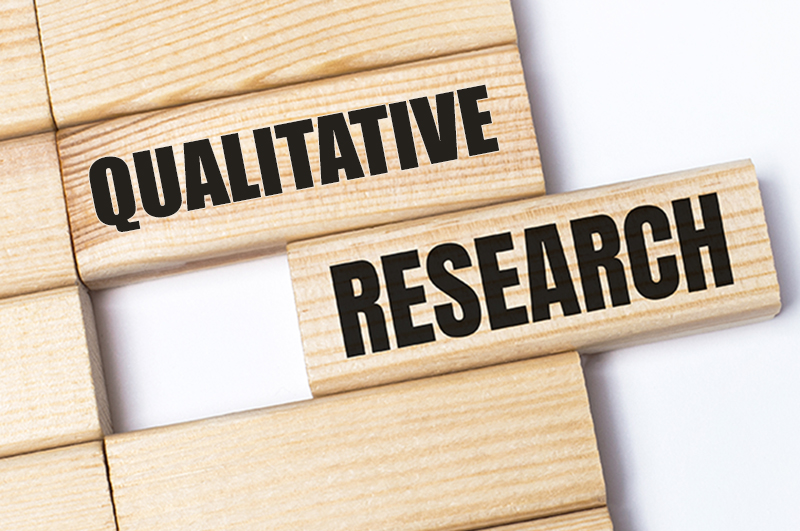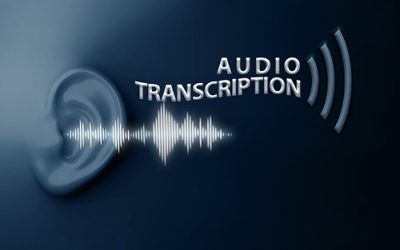Verbatim transcription is the process of capturing spoken content in written form while maintaining the speaker’s exact words, grammar, and non-verbal cues. It’s an essential aspect of qualitative research, enabling in-depth analysis, profound insights, and accurate representation of participants’ viewpoints. However, transcribing the intricacies and underlying meanings in data collected from interviews, focus groups, or observations demands careful attention. This is why researchers often turn to professional digital transcription agencies to obtain precise representations of participants’ perspectives. Experienced transcriptionists adhere to specific guidelines, ensuring that verbatim transcripts faithfully reflect spoken language. This allows for comprehensive analysis and meaningful interpretation within qualitative research.
Verbatim Transcription for Qualitative Research – 7 Key Rules
Verbatim transcription involves capturing spoken language precisely as well as non-verbal cues, pauses, and other features of speech. If you are attempting to do the audio-to-text conversion on your own, following these rules is critical to ensure quality verbatim transcripts:
- Capture all spoken words: Transcribe every word spoken, including filler words (um, uh), repetitions, stutters, false starts, and non-verbal sounds (laughter, coughing). Even if a word seems unnecessary or redundant, it should still be included. These elements provide an accurate representation of the speaker’s speech patterns and style.
In qualitative research, verbatim transcripts allow you to interpret the data based on an unbiased and complete view of the dialogue. You can analyze the specific words used, interruptions, overlaps, and pauses, leading to a more nuanced understanding of participants’ perspectives.
- Reflect grammar and speech patterns: Transcribe words exactly as they are spoken, even if they are pronounced incorrectly or colloquially. Retain the speaker’s original grammar, sentence structure, and word usage. Avoid making corrections to grammar or phrasing unless it significantly affects comprehension. Preserve not only the words spoken but also the tone, emphasis, and emotions conveyed by participants. These linguistic aspects usually carry meaning, emotion, and context which might be lost if grammar is corrected. Use appropriate punctuation marks to indicate pauses, hesitations, and intonation.
The goal of qualitative research is to understand and interpret participants’ experiences, perspectives, and meanings as accurately and authentically as possible. People often use unconventional sentence structures, slang, and informal language in everyday conversation. Capturing these subtleties are vital to understand the underlying meanings and the context in which the communication occurs.
- Indicate non-verbal elements: Include non-verbal expressions and actions such as laughter, sighs, pauses, and tone of voice. Non-verbal cues provide context to spoken words. Tone of voice, facial expressions, and body language can offer insights into emotions, attitudes, and underlying meanings that might not be fully expressed through words alone. To reflect non-verbal cues such as laughter, sighs, hesitations, and emotional tones, use descriptors in brackets to indicate these cues (e.g., [laughter], [sigh]).
Transcripts that capture sighs, laughter, hesitations, or changes in pitch and tone allow you to recognize participants’ emotional states, which can greatly influence their perspectives and responses. This enhances the depth, authenticity, and meaningfulness of the data, contributing to a more comprehensive and insightful analysis.
- Accurate representation of dialects and accents: If the speaker has a particular accent or dialect, try to capture it in the transcription. Use phonetic spellings or note the accent to reflect the speaker’s unique speech patterns. Accurate representation of dialects and accents in is essential for maintaining the integrity, authenticity, and inclusivity of participants’ voices. Dialects and accents reflect cultural and regional identities, social contexts, and linguistic diversity.
Participants in qualitative research may come from diverse linguistic and cultural backgrounds. Their speech reflects their unique communication styles, cultural backgrounds, and individual expression. Transcribing dialects and accents preserves the authentic voices of participants. It allows you to capture nuances in language use, idiomatic expressions, and linguistic styles that are crucial for a thorough analysis.
- Use timestamps: When transcribing audio or video recordings, include timestamps at regular intervals (e.g., every minute) or whenever there is a significant change in topic or speaker. Timestamps help with referencing specific parts of the transcription during analysis or review.
- Use a consistent time format, such as hours:minutes:seconds or minutes:seconds, depending on the duration of the session.
- Place the timestamps at the beginning of each transcribed segment or new interaction.
- Format timestamps to stand out from the rest of the text, using bold or italics.
- If there’s a noteworthy event or interaction, consider adding additional descriptive information alongside the timestamp.
Timestamps in qualitative research transcripts indicate when specific segments of speech or interactions occurred during the research session, interview, or observation. When using timestamps in your research transcripts, consider these guidelines:
With timestamps, you can quickly locate and refer back to specific points in the conversation by using timestamps. This is especially helpful when analyzing or revisiting particular segments during the coding or analysis process.
- Maintain readability: While aiming for verbatim accuracy, ensure that the transcription is still readable and understandable. Use proper punctuation, paragraph breaks, and formatting to enhance readability. Break up long sentences or statements into smaller chunks if necessary.
Verbatim transcription prioritizes authenticity and accuracy in representing participants’ voices. However, striking a balance between faithfulness to the original speech and ensuring readability for qualitative research analysis is crucial. Clear formatting and labeling can help readers engage with the data effectively while respecting the integrity of participants’ expressions.
- Speaker identification: If there are multiple speakers, clearly identify each speaker by using labels or initials or a pseudonym followed by a colon (e.g., A: “I think we should…”). Whenever a new speaker starts talking, include their identifier followed by a colon before their dialogue. This helps distinguish between speakers during the transcription and subsequent analysis.
Identifying speakers in qualitative research transcripts is crucial for clarity and context. It allows you to distinguish between different participants and understand who is contributing to the conversation.
Benefits of Verbatim Transcripts for Qualitative Researchers
To sum up, verbatim transcription of research data captures not only the essence and interpretation of the content, but also the situational backdrop in which these interactions took place. Four top benefits of verbatim transcripts for qualitative research are:
- Streamlined coding process: Working with text enables researchers to easily identify and categorize themes and patterns in the data.
- Preferred reference format: Text transcripts offer a clearer and more accessible format that facilitates comprehensive understanding of the content.
- Compatibility with interpretation: Researchers can explore the nuances of language and phrasing, enabling extraction of meaningful insights.
- Statistical and sentiment analysis: Software tools can efficiently process and analyze textual data, providing quantitative insights that complement qualitative findings.
Professional Support for Quality Documentation
While verbatim transcripts offer many benefits for qualitative research, it can be challenging to ensure accurate capture of the spoken words in interviews and other interactions. While transcription software can help save time and support formatting, this technology can struggle with accents, dialects, speech impediments, and variations in tone and pacing, making it inappropriate for verbatim transcription. Fortunately, professional research transcription services can ensure accurate and reliable verbatim transcription for research purposes. Experts can ensure the correct, consistent, and clear documentation in the specified turnaround time at affordable rates.
Unlock the power of verbatim transcription for your research!




